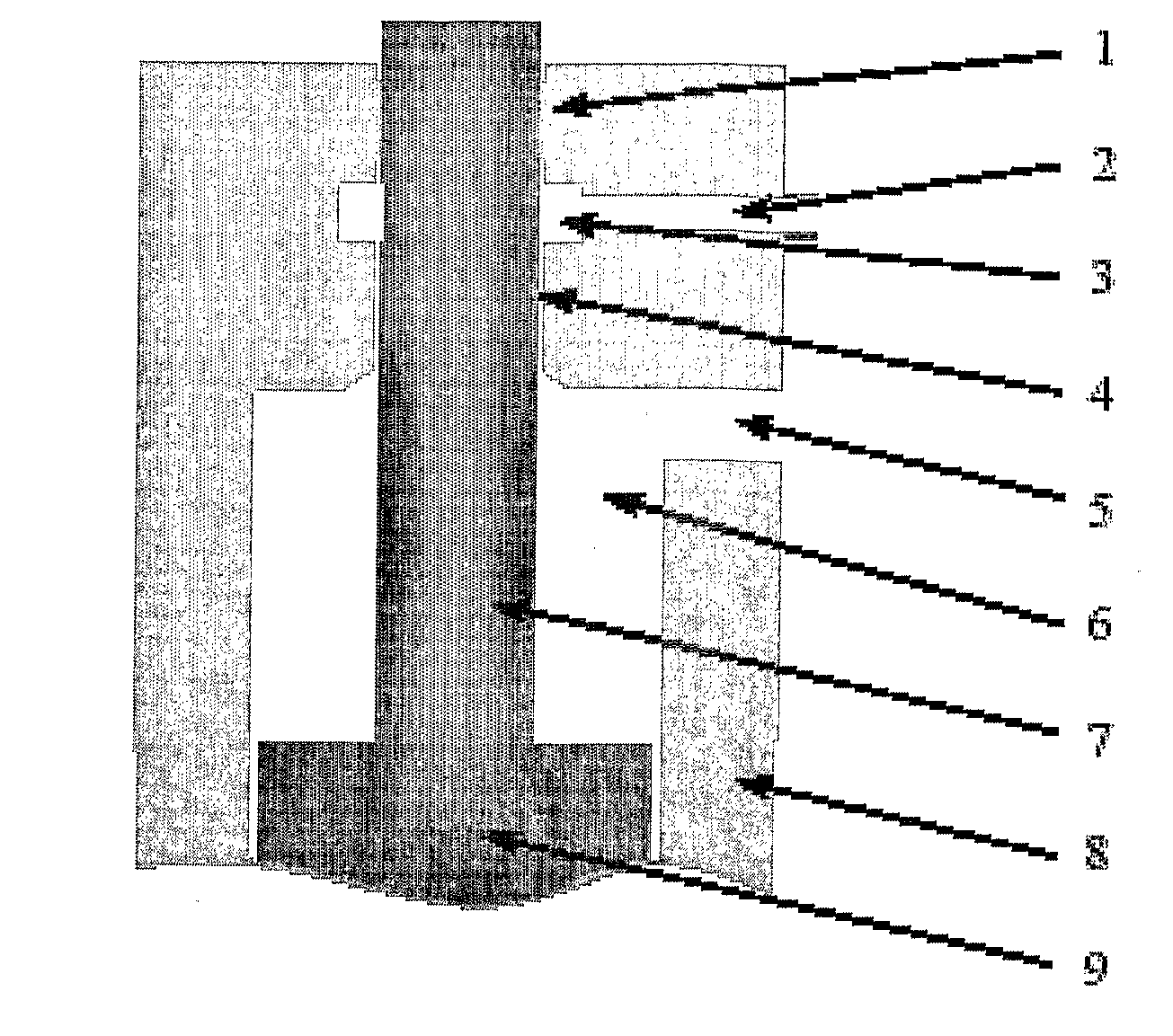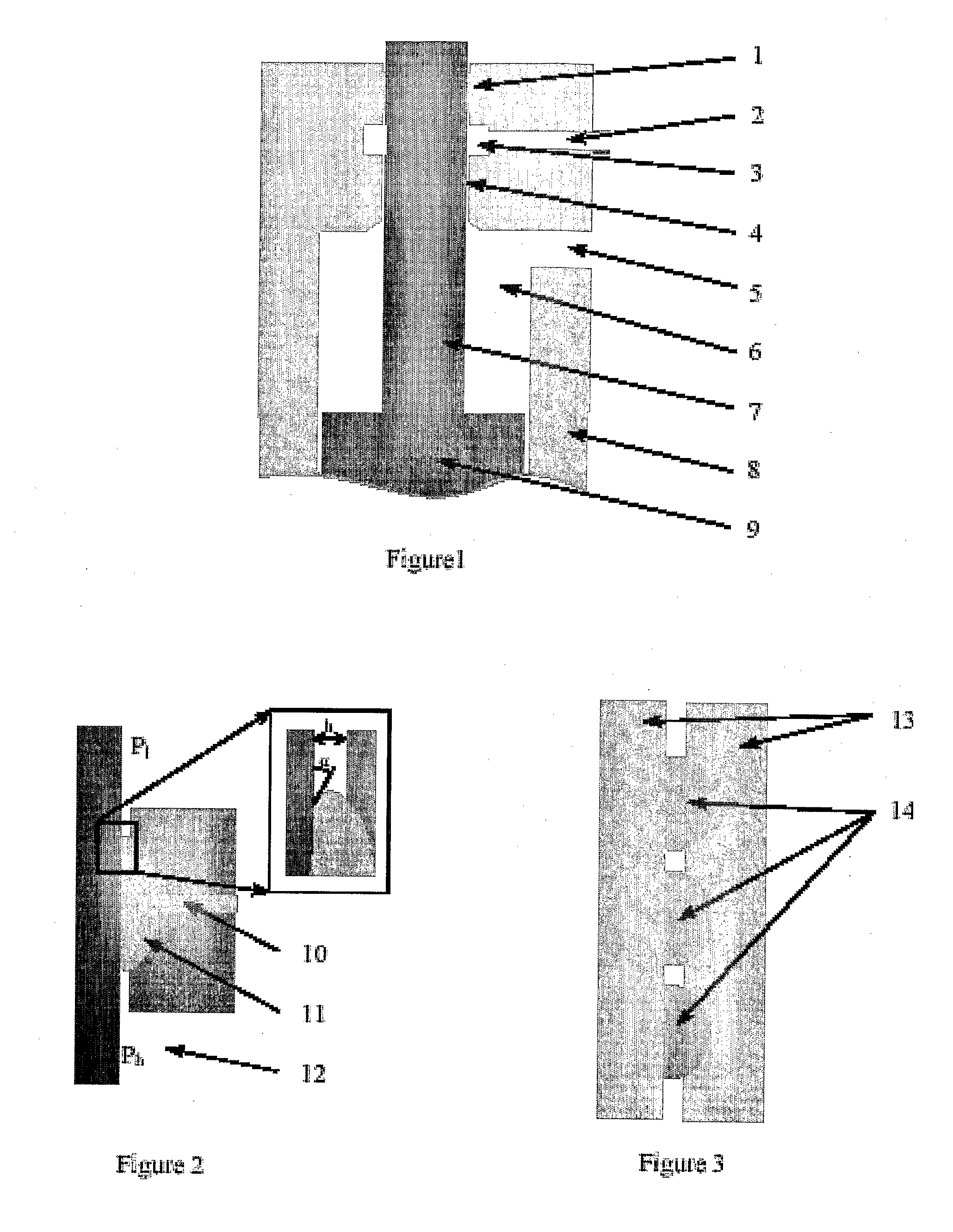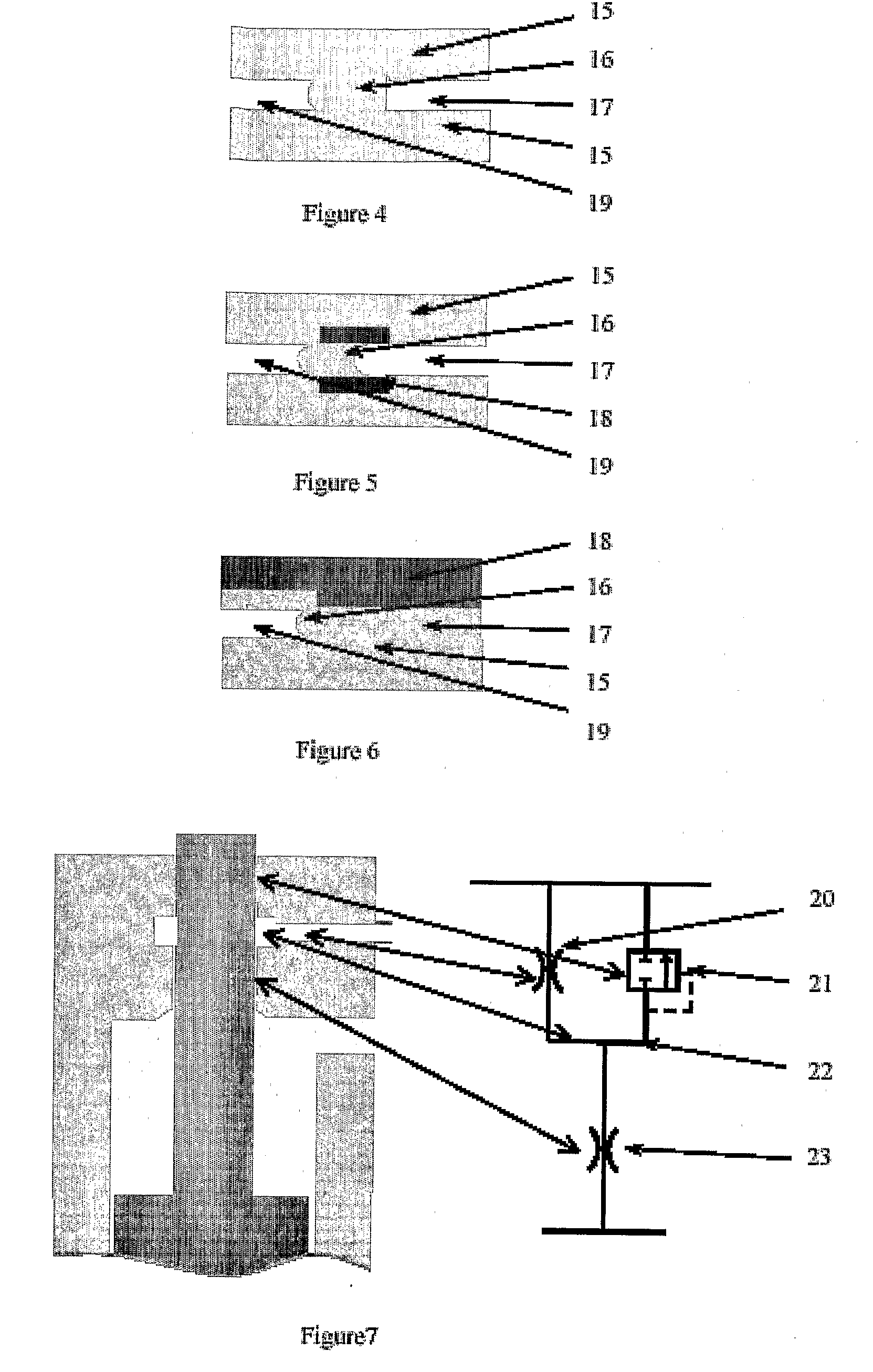Surface Tension Seal
a surface tension and seal technology, applied in the direction of engine seals, leakage prevention, machines/engines, etc., can solve the problems of hydraulic actuators rare in micro system technology, tight tolerances, and large pressure drop of surface tension seals
- Summary
- Abstract
- Description
- Claims
- Application Information
AI Technical Summary
Benefits of technology
Problems solved by technology
Method used
Image
Examples
example 1
Example of a Fabrication Process
[0116]Intended as exemplary only a cylinder and seal was fabricated as one monolithic structure. This minimizes the number of components thus simplifying the assembly of the actuator. The cylinder and the seal were made of brass. The fabrication of the actuator was divided in 8 steps as outlined in FIG. 14. In the first two steps, drilling and reaming with miniature tools defined the rough actuator shape. In step three the dimensions and the surface quality of the cylinder were improved by reaming. A tight tolerance on the seal diameter was achieved with planetary Micro Electro Discharge Machining (μLEDM) in step 4. Electrode wear was compensated by Wire Electro-Discharge Grinding (WEDG) (Song X. et al. Proc. of SPIE Symposium on Micromachining and Microfabrication, Paris, 1999, 792-799). Next, a WEDG formed electrode was used to make the seal cavity. In step 6, a connection channel was drilled using μEDM. Finally, a Ga supply channel was glued with l...
PUM
 Login to View More
Login to View More Abstract
Description
Claims
Application Information
 Login to View More
Login to View More - R&D
- Intellectual Property
- Life Sciences
- Materials
- Tech Scout
- Unparalleled Data Quality
- Higher Quality Content
- 60% Fewer Hallucinations
Browse by: Latest US Patents, China's latest patents, Technical Efficacy Thesaurus, Application Domain, Technology Topic, Popular Technical Reports.
© 2025 PatSnap. All rights reserved.Legal|Privacy policy|Modern Slavery Act Transparency Statement|Sitemap|About US| Contact US: help@patsnap.com



